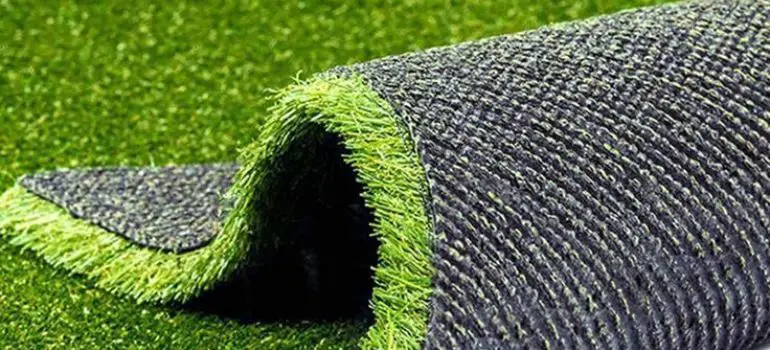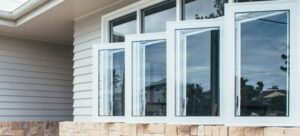Introduction
Installing outdoor carpet on dirt can be a DIY project that adds charm and comfort to your outdoor living space. It’s an ideal option for covering unsightly patches of dirt or gravel. Before diving into the installation process, make sure you have the necessary tools and materials on hand.
Gather the Necessary Tools and Materials
To get started, you will need the following tools and materials:
- Utility knife
- Outdoor carpet adhesive
- Tape measure
- Broom
- Outdoor carpet
- Carpet seam tape (if necessary)
- Roller or tamper
- Stakes (for securing edges)
- Protective gloves
Prepare the Ground
Before laying the outdoor carpet, it’s crucial to prepare the ground properly. Start by clearing the area of any debris, rocks, or weeds. Use a broom to create a smooth and even surface. Ensure that the ground is dry and free from moisture.
Measure and Cut the Outdoor Carpet
Measure the area where you intend to install the outdoor carpet. Leave some extra carpet on all sides to trim and fit precisely. Once measured, use a utility knife to cut the carpet accordingly.
Apply Adhesive
Apply outdoor carpet adhesive evenly to the prepared ground. Ensure that you follow the manufacturer’s instructions for adhesive application. Typically, you will need a notched trowel to spread the adhesive uniformly.
Lay Down the Carpet
Carefully lay the outdoor carpet onto the adhesive while it’s still wet. Start from one end and work your way towards the other, smoothing out any wrinkles or bubbles as you go.
Seam and Trim as Needed
If you have multiple pieces of carpet, use carpet seam tape to join them seamlessly. Trim any excess carpet around the edges and corners for a neat finish.
Secure the Edges
To prevent the carpet from shifting, use stakes or adhesive along the edges. This will help keep the carpet securely in place, even during heavy winds or rain.
Allow for Proper Drainage
If your outdoor carpet covers a large area, it’s essential to ensure proper drainage. Create small drainage channels or holes in the carpet to allow rainwater to escape and prevent mold or mildew growth.
Maintain and Clean the Outdoor Carpet

Regularly maintain your outdoor carpet by sweeping away dirt and debris. Use a mild detergent and water to clean any stains or spills. Proper care will extend the life of your outdoor carpet.
Additional Tips for Outdoor Carpet Maintenance
- Regular Cleaning: As mentioned earlier, it’s important to regularly sweep away dirt and debris from the surface of your outdoor carpet. Additionally, you can use a hose or a carpet cleaner to give it a thorough wash from time to time.
- Stain Removal: Address any stains promptly. Use a mild detergent and water to clean the affected area gently. Avoid using harsh chemicals, as they can damage the carpet fibers.
- Protect from Heavy Furniture: If you have heavy furniture on your outdoor carpet, consider using furniture coasters or pads to distribute the weight evenly and prevent indentations.
- Rotate Furniture: To prevent uneven wear and tear, occasionally rearrange your outdoor furniture. This will help ensure that the carpet wears evenly over time.
- Store for Winter: If you experience harsh winters, it’s a good idea to roll up and store your outdoor carpet during the colder months to protect it from snow, ice, and freezing temperatures.
- Inspect for Damage: Regularly inspect your outdoor carpet for signs of damage, such as loose edges or tears. Address any issues promptly to prevent them from worsening.
Additional Considerations
Weather and Climate:
Before you begin your outdoor carpet installation project, take into account your local climate. Outdoor carpets are designed to withstand various weather conditions, but extreme heat or prolonged exposure to harsh sunlight can cause fading over time. If you live in an area with intense sunlight, consider choosing a carpet with UV-resistant properties to ensure its color stays vibrant.
Durability and Quality:
Investing in a high-quality outdoor carpet can significantly extend its lifespan. Look for carpets made from durable materials like polypropylene or olefin, which are known for their resistance to moisture and mold. Thicker carpets tend to be more comfortable underfoot but may require more maintenance.
Design and Aesthetics:
Outdoor carpets come in a wide range of colors and patterns. Choose a design that complements your outdoor décor and personal style. A well-chosen outdoor carpet can tie together your outdoor furniture and create a cohesive look for your space.
Safety Concerns:
If you have children or pets, safety is a top priority. Some outdoor carpets come with slip-resistant backings to minimize the risk of accidents. Additionally, ensure that the carpet you choose doesn’t become too hot to touch during scorching summer days.
Warranty:
Check the warranty offered by the carpet manufacturer. A longer warranty period is often a sign of the manufacturer’s confidence in the product’s durability. Understanding the warranty terms can provide you with peace of mind regarding your investment.
Additional Tips for a Successful Installation
All-Weather Carpet Padding:
Consider using all-weather carpet padding beneath your outdoor carpet. This padding not only adds extra comfort but also provides insulation against the cold ground. It acts as a moisture barrier, keeping the carpet drier and preventing mold or mildew growth.
Regular Inspection:
After installation, periodically inspect your outdoor carpet for any signs of wear and tear. Look for loose edges, wrinkles, or areas that may require resealing. Addressing issues promptly can prevent further damage and ensure the longevity of your outdoor carpet.
Eco-Friendly Options:
For environmentally conscious homeowners, there are eco-friendly outdoor carpet options available. These carpets are made from recycled materials and are designed to be sustainable and durable, making them an excellent choice for outdoor use.
DIY vs. Professional Installation:
While DIY installation is possible, professional installation may be the best choice for complex or large projects. Professionals have the expertise to ensure that the outdoor carpet is properly stretched, adhered, and seamed, resulting in a flawless finish.
Seasonal Considerations:
If you experience extreme seasonal changes in your area, such as heavy rainfall followed by hot, dry summers, it’s essential to choose an outdoor carpet that can withstand these fluctuations. Mold and mildew resistance become even more critical in such conditions.
Storage for Winter:
As mentioned earlier, if you live in an area with harsh winters, consider rolling up and storing your outdoor carpet during the colder months. This will protect it from snow, ice, and the potential for damage caused by freezing temperatures.
DIY Cleaning:
For routine cleaning, a mixture of mild detergent and water is usually sufficient. However, avoid using bleach or harsh chemicals, as they can damage the carpet. Be gentle when scrubbing to avoid fraying the fibers.
Professional Cleaning:
For deep cleaning or stubborn stains, consider hiring a professional carpet cleaning service. They have the tools and expertise to ensure your outdoor carpet looks its best.
Resealing Seams:
If you notice seams coming apart over time, use outdoor carpet seam tape and adhesive to reseal them. Properly sealed seams are essential for maintaining the carpet’s integrity.
Periodic Reinstallation:
Over time, you may find that your outdoor carpet requires reinstallation due to shifting, wear, or changes in your outdoor space’s layout. Be prepared to repeat the installation process as needed to keep your outdoor area looking its best.
Frequently Asked Questions (FAQs)
Yes, you can install outdoor carpet on various types of dirt, including sand, gravel, and soil. Just make sure to prepare the ground properly.
Yes, outdoor carpets are designed to withstand various weather conditions, including rain, sun, and snow. They are also mold and mildew resistant.
Yes, you can install outdoor carpet over a concrete patio, provided it’s clean and dry. Use an outdoor carpet adhesive suitable for concrete surfaces.
It’s advisable to clean your outdoor carpet regularly, especially after heavy use or when you notice stains. Routine cleaning will keep it looking fresh and vibrant.
Installing outdoor carpet can be a DIY project, but it may be easier with the assistance of a friend or family member. Professional installation is also an option if you prefer expert guidance.
Conclusion
Installing outdoor carpet on dirt is a fantastic way to enhance the comfort and aesthetics of your outdoor space. With the right tools, materials, and proper installation techniques, you can create a beautiful and functional outdoor area that you’ll enjoy for years to come.



